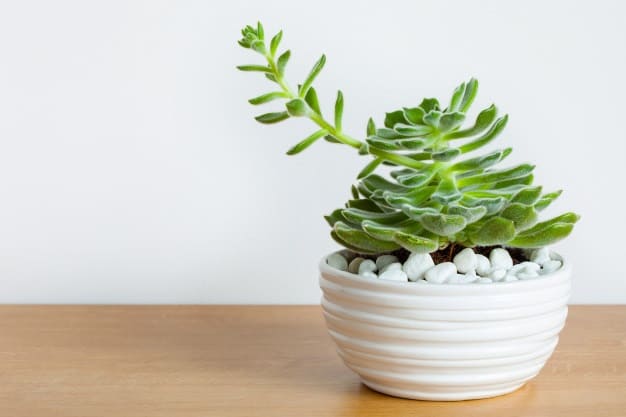Etiolated Echeveria 911: Fix That Stretching Succulent NOW
Are your once-compact echeverias starting to resemble spindly teenagers going through an awkward growth spurt? Don’t panic! We’ve got the 911 on how to revive your stretched-out succulents.

Contents
Why Succulents Stretch for the Sky
Echeverias are sun-worshippers that crave lots of bright light. When they don’t get enough, they’ll desperately stretch towards any available rays, becoming etiolated (botanist-speak for unnaturally elongated). The once-compact rosette sprouts long, spindly stems with widely-spaced leaves as it reaches for more sunshine. This “leggy” growth is unsightly and robs the plant of its trademark chunky shape.
The Rescue Plan: Rehab for Leggy Echeverias
Not to worry, you can rehab those stretched-out echeverias! Start by taking 4-6 inch stem cuttings from the healthiest, compact growth at the top. Let them callus over for a few days, then:
- Fill a pot with well-draining cactus/succulent soil
- Moisten the soil lightly
- Plant the cuttings at the same depth as before, gently firming the soil
- Place in bright, indirect light and wait 8-10 days before watering again
If you don’t have nice stem cuttings, try propagating from healthy leaves instead. Gently twist a plump leaf off the stretched stem, allowing the end to callus. Then set the calloused end on moist soil and wait for roots and a new plant to emerge.
Within a few weeks, your rehabbed echeveria cuttings should reward you with fresh, compact growth.
Prevention Tips: Keep Your Echeverias Compact
To avoid stretched growth in the first place:
- Provide at least 6 hours of direct sun, or bright indoor light from a grow light
- In winter, move echeverias to the sunniest spot you’ve got
- Don’t over-water or over-fertilize, as this can cause rapid, floppy growth
With the right light conditions and care, your echeveria rosettes will stay satisfyingly plump and stunted – just how we like our succulents!
